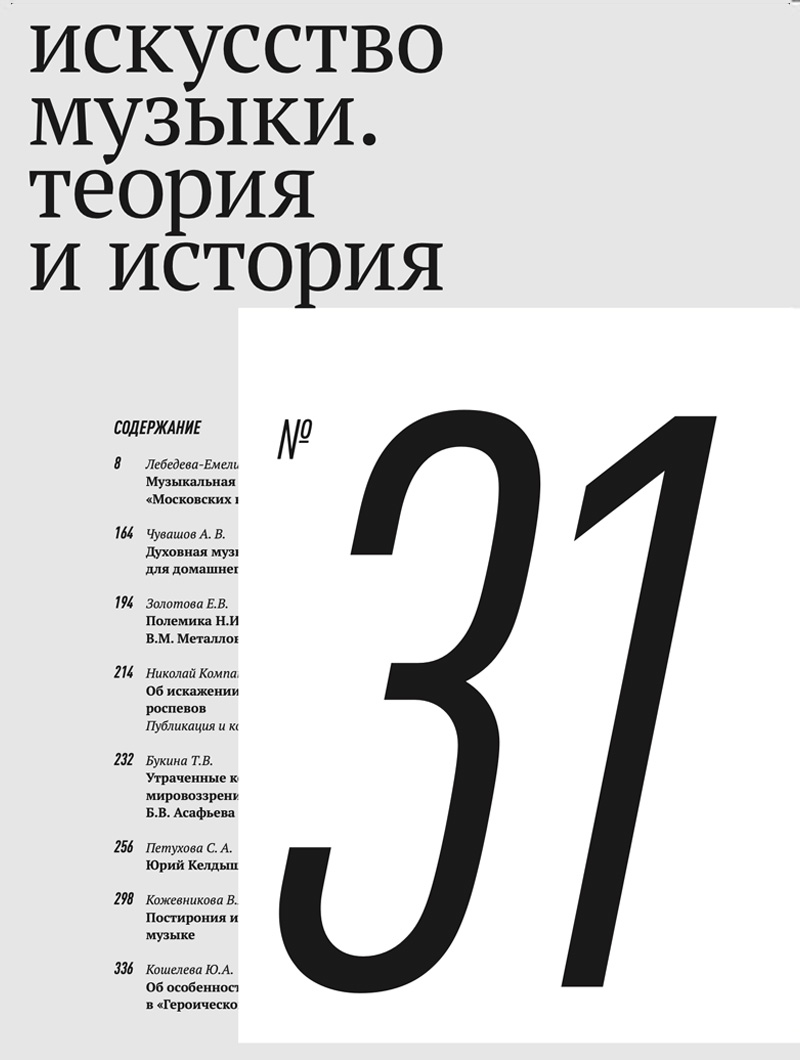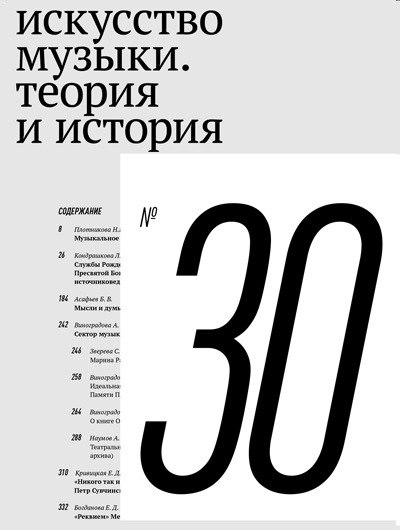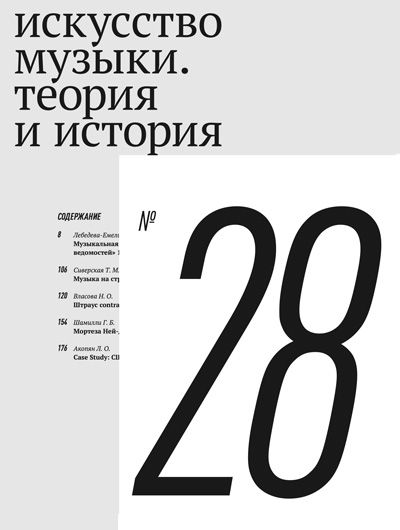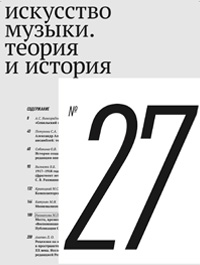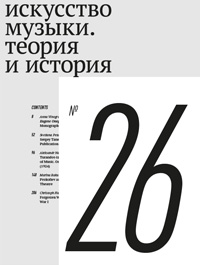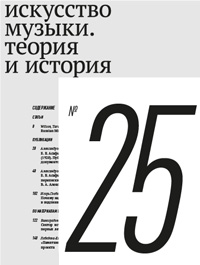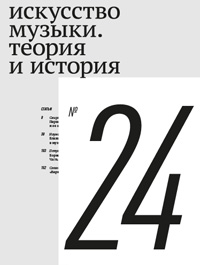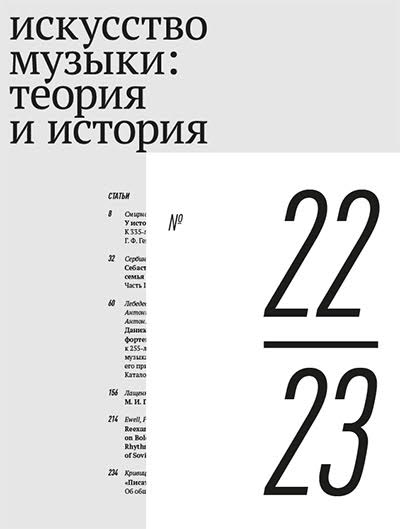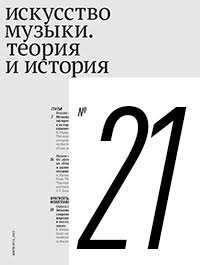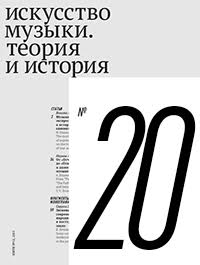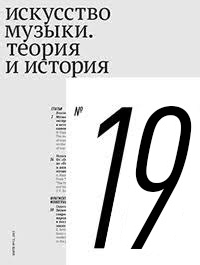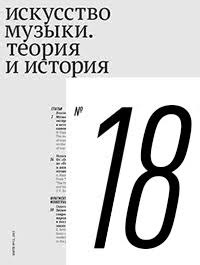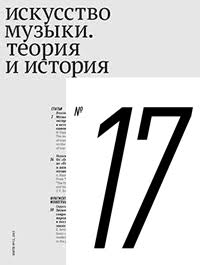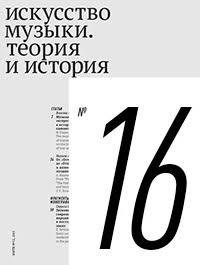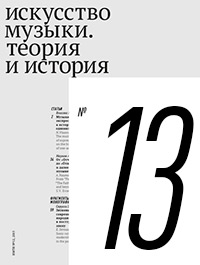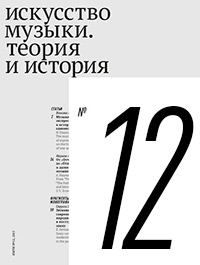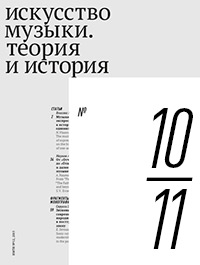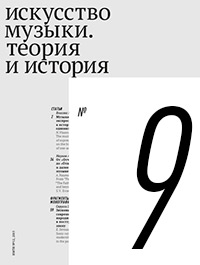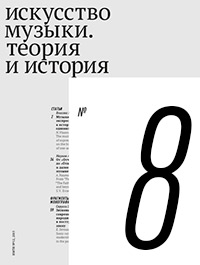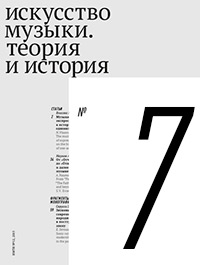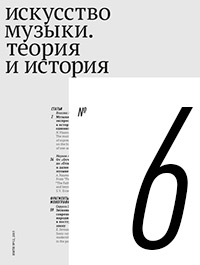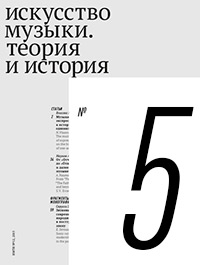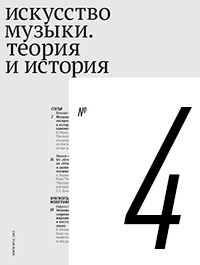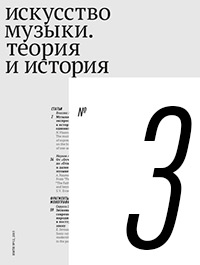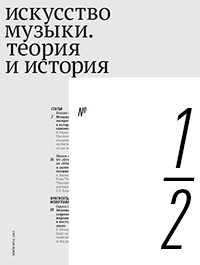2023 №28
This is the first attempt to present in full the announcements and chronicles related to music culture that appeared in the newspaper Moskovskie Vedomosti (‘Moscow Gazette’) during the year 1785. The repertoire of the Petrovsky Theatre is listed, performances of virtuosi in Moscow are advertised and reviewed, announcements on the employment of musicians and dancing masters, on their private lessons, on sales of music instruments, on the opening of new music shops, and on new music editions and books are published. The descriptions of musical events in Vienna, Berlin, London, and less important European cities form a prominent part of the newspaper chronicle: this information was of great interest for the Muscovites of the late 18th century. The readers got to know interesting details concerning the performances of Handel’s Messiah in London and Paris, the visits to Russia of such celebrities as singer Luigi Marchesi, singer and harpsichord player Antonio Sartori, Portuguese singer Luisa Todi, German clarinetist Johann Joseph Behr, etc. The publication of the newspaper materials is accompanied by scholarly comments and illustrations.
Key Words
Moskovskie vedomosti, 1785, Petrovsky Theatre, repertoire of performances, concerts, sale of musical instruments, announcements of musicians and dancing masters, reports of the escapes of serf musicians.
Commenting on and analyzing the role of musical episodes and devices in the imagery and dramaturgy of Leskov’s works, the author highlights the external and internal manifestations of musicality. Those of the former kind include the musical episodes, genres and terms mentioned in Leskov’s texts, as well as the implied sound of musical instruments, etc. The manifestations of the latter kind include techniques echoing the musical ones: differentiation of speech in terms of intonation and rhythm, elements of polyphony and variation technique, and so on.
The role of music in Leskov’s oeuvre is closely related to the musical nature of the writer himself, which is a significant component of his unique literary style.
Key Words
Leskov, music, literature, musicality of prose, Lefty, folklore, song.
Key Words
Richard Strauss, operatic legacy, Feuersnot, Wagner, parody, Märchenoper, one-act opera.
Key Words
Morteza Ney-Davud, ‘Bird of Dawn’, traditional music of Iran, dastgāh, history of Jewish music, Western Asia, Fikret Amirov, ‘Azerbaijani Capriccio’.
Key Words
177 American music, ‘Americanism’, Aaron Copland,
Samuel Barber, Giancarlo Menotti, Ned Rorem, ‘university composers’, Roger Sessions, Milton Babbitt, Elliott Carter, George Rochberg, George Crumb.
